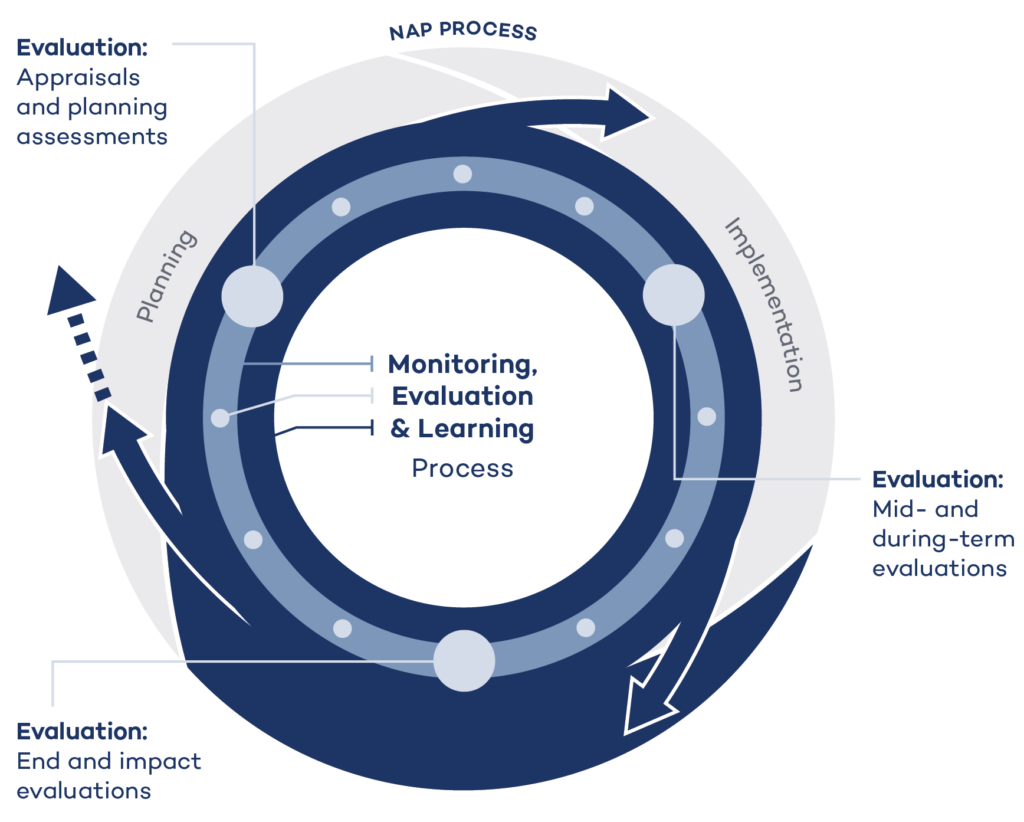Le suivi, l’évaluation et l’apprentissage (MEL) permettent de mieux comprendre si les actions d’adaptation au changement climatique fonctionnent, comment et pour qui. Ils permettent également d’évaluer si les actions continueront à fonctionner à l’avenir.
Les systèmes MEL visent à éclairer les politiques et les pratiques d’adaptation à partir des données et des preuves générées par le processus itératif de suivi, d’évaluation et d’apprentissage tout au long du processus PNA.
MEL est à la fois une phase distincte du processus PNA et un ensemble continu d’activités qui se poursuivent tout au long de ses autres phases. Comme le montre la figure ci-dessous, les trois composants d'un système MEL interagissent entre eux et avec le processus NAP.
Les pays devraient établir et renforcer des systèmes nationaux de MEL qui intègrent l’égalité des sexes et l’inclusion sociale ; établir des liens stratégiques entre les niveaux national et local ; et sont alignés sur d'autres processus mondiaux de changement climatique et de développement (par exemple, l'Accord de Paris, le Cadre de Sendai pour la réduction des risques de catastrophe et les objectifs de développement durable).
Notre support technique sur le MEL pour l’adaptation nationale couvre cinq domaines clés :
- concevoir et réviser les systèmes MEL : clarifier et revoir l’objectif des systèmes MEL, ce qui doit être mesuré, pour qui, pourquoi et les prochaines étapes.
- gestion des données, des informations et des connaissances : renforcer et mettre en œuvre les évaluations et les outils nécessaires pour générer des preuves tout au long du processus PNA pour des systèmes MEL efficaces.
- indicateurs d’adaptation : identifier et appliquer des indicateurs pour suivre les progrès en matière d’adaptation au fil du temps.
- évaluer et rendre compte des progrès : analyser des données provenant de plusieurs sources pour examiner et rendre compte des progrès et pour évaluer l'efficacité, l'impact et les performances des processus NAP.
- Apprentissage: identifier et mettre en œuvre des activités pour tirer les leçons des preuves générées par les systèmes MEL dans le but d’éclairer les décisions locales et nationales et les accords mondiaux.




